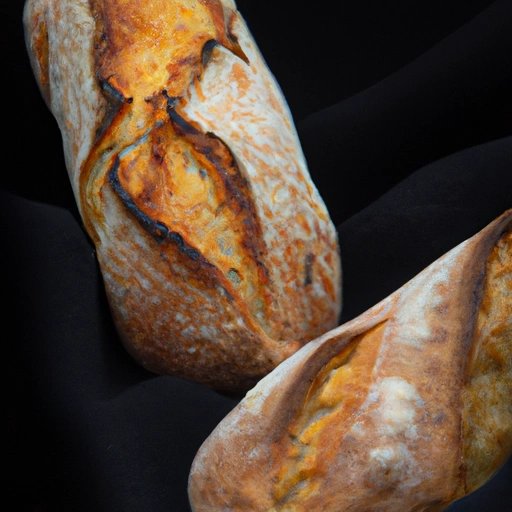French Bread
Description

French bread, known for its crisp crust and chewy interior, is a staple in both European and American cuisines. Distinguished by its long, thin shape when referred to as a baguette, or rounder shapes such as boules or bâtards, French bread is celebrated for its simple ingredients and artisanal craftsmanship. The traditional recipe includes only flour, water, yeast, and salt, making it a pure embodiment of baking at its finest.
Common uses
French bread serves as a versatile ingredient and a staple accompaniment to numerous dishes. It is used as a base for bruschetta, crostini, and sandwiches or as an essential side for soups, stews, and salads. Its capacity to absorb flavors makes it ideal for recipes like French toast or bread pudding, and its sturdy texture is perfect for holding up to hearty spreads and toppings.
Nutritional value
Calories
A typical serving of French bread, weighing approximately 2 ounces (57 grams), contains roughly 150 calories.
Protein
French bread provides around 5 grams of protein per serving.
Fat
It is low in fat, with less than 1 gram per serving in most cases.
Carbohydrates
Carbohydrates are abundant in French bread, with about 30 grams per serving.
Vitamins
While not a significant source of vitamins, French bread contains small amounts of B vitamins due to the presence of enriched flour.
Minerals
It also contains trace minerals such as selenium, manganese, and iron, which contribute to various bodily functions.
Health benefits
The moderate protein and low fat content in French bread can contribute to a balanced diet. The energy provided by carbohydrates makes it a quick source of fuel for the body. Additionally, the minimal presence of B vitamins and minerals supports metabolic processes and overall health when consumed as part of a varied diet.
Potential risks
Overconsumption of French bread can lead to excessive calorie intake, potentially resulting in weight gain. Furthermore, being made from refined flour, it is low in fiber and may contribute to spikes in blood sugar levels. Those with gluten sensitivities or celiac disease should avoid French bread as it contains gluten.
Common recipes
French bread is a key ingredient in recipes like garlic bread, croutons for salads, or the base for classic French onion soup. It also appears in various sandwiches such as the croque monsieur or po' boys.
Cooking methods
French bread can be baked, toasted, grilled, or broiled, allowing it to develop a range of textures from soft to crisply charred.
Pairing with other ingredients
Its neutral flavor pairs well with both sweet and savory toppings, including jam, cheese, meats, and vegetables. It also complements a wide array of spreads and dips like hummus or olive tapenade.
Summary
French bread is an iconic ingredient celebrated for its versatility and simplistic beauty. Whether used in traditional European recipes or as a component in American dishes, this bread offers a delightful texture and a canvas for a variety of flavors. Despite its simple ingredients, French bread carries a rich history and remains a beloved part of the culinary world.